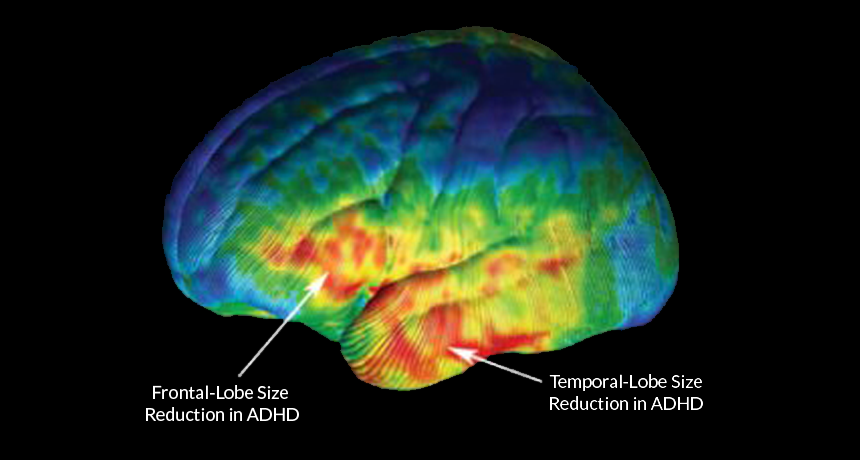Brain signals attention disorder
Children with attention disorders appear to have less tissue in certain parts of their brain.

This color-coded image of the brain's left side shows the areas (red and orange) that were smaller in children with attention disorders.
UCLA Lab. of Neuro Imaging







